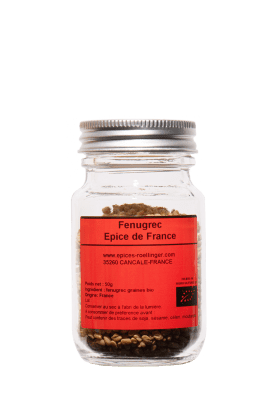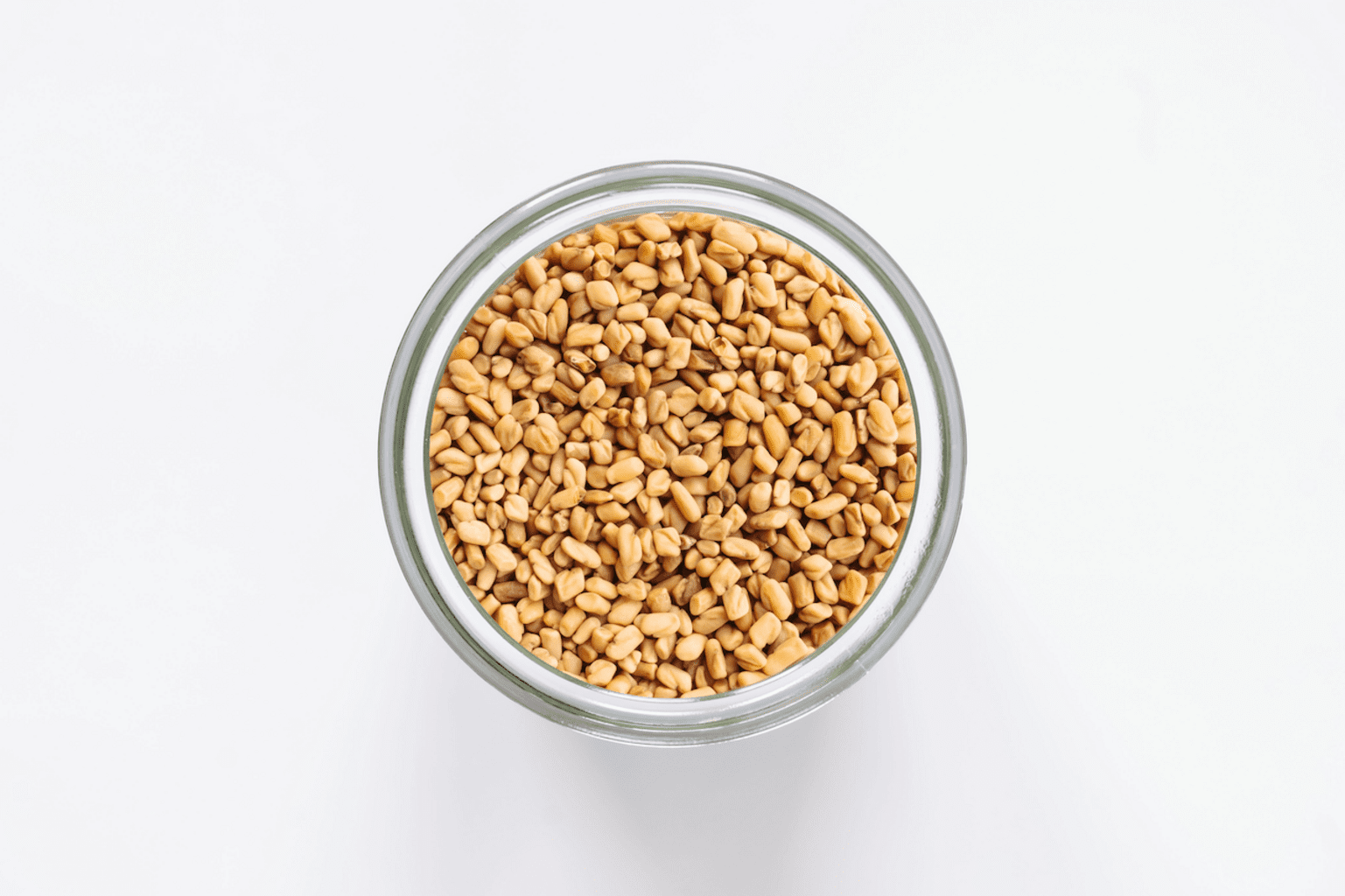Fenugreek

Recommendations
-
Allergens
Absent, except for cross-contamination.
May contain traces of sesame, celery, mustard, soy. - Origin France
- Storage / Use In a cool, dark, dry place.
Olivier Rœllinger's words
As a result, fenugreek is rarely used by itself but serves as a base for a number of mixes.
At my restaurant, you would find them in my lobster in its stock; royal rock lobster with a bouillon of squash seeds and sesame; mussel velouté with my curry; and saddle of lamb with the Big Caravan spice mix. More simply, I use this spice in all my fish and poultry stocks, and I like to grind it with coriander , sesame seeds, toasted almonds, fenugreek to make a buttery or creamy fish sauce with the juice of a lime.
Story
We source this spice from a father-and son farm in Northeastern France that went certified organic 20 years ago.
Fenugreek (Trigonella foenum-graecum) is an annual plant that grows up to 80 cm. tall. It’s a member of the Fabacae bean family, which also includes tamarind. The plant was a favorite with the ancient Greeks. During the Roman Empire, the plant was grown as a type of hay and its name is derived from the Latin term for ‘Greek hay.’
The knobby, angular brownish yellow seeds mature in long pods on the plant.
Fenugreek is native to Egypt and the entire Mediterranean basin.
Thanks to travellers and in particular explorers it conquered India, which adores this spice, and also Argentina. In Turkey these seeds were long combined with paprika and sesame oil to create the legendary pastrama which flavoured and preserved dried meats. In the Persian Gulf they were mixed with cardamom, garlic, green tomato, caraway and coriander to create helbe. In India the seeds are always used in chutneys; they are known as ground Methi and they are also found in all curries.
